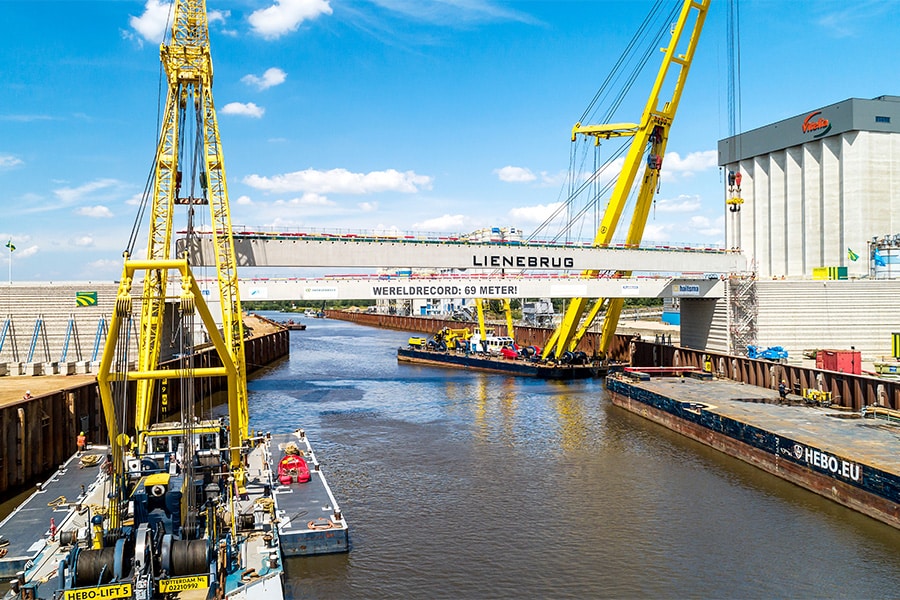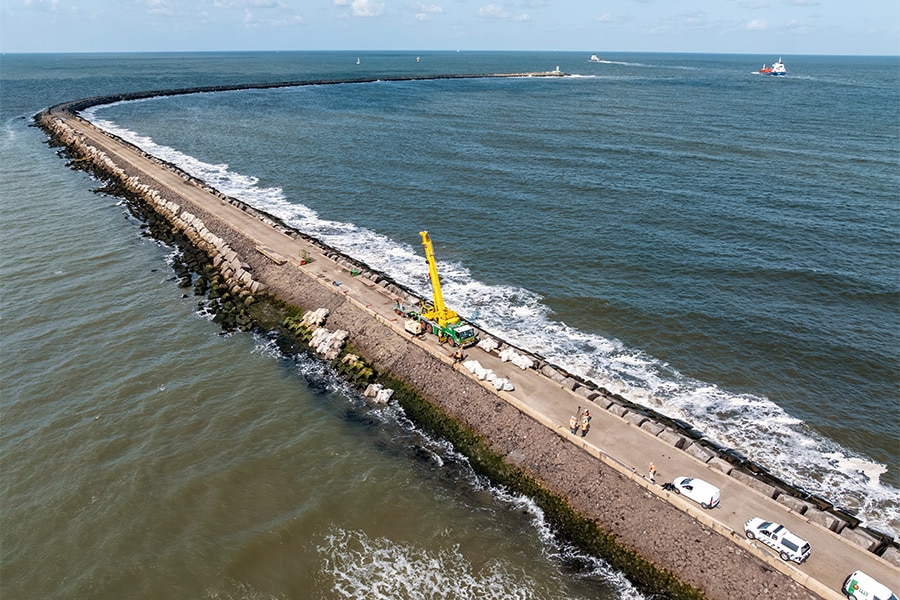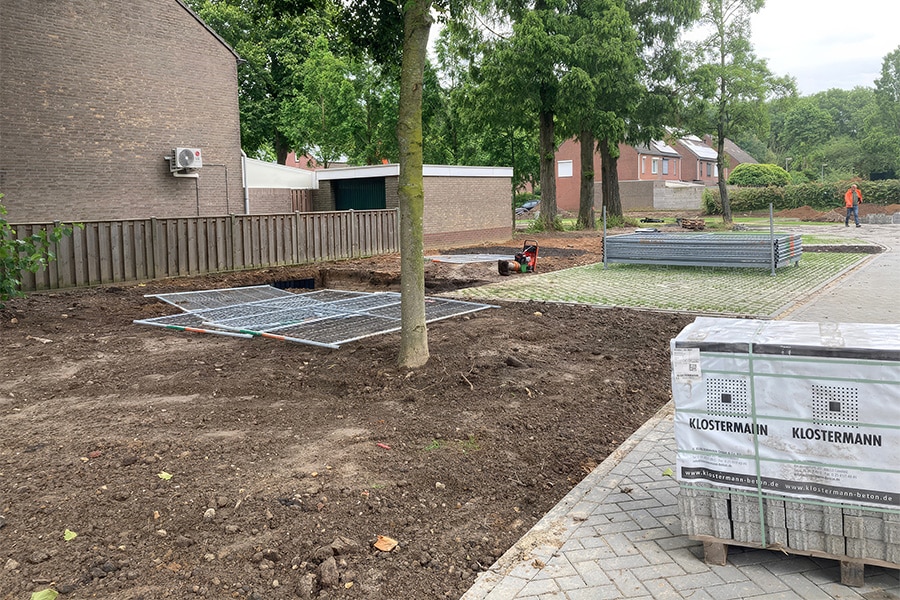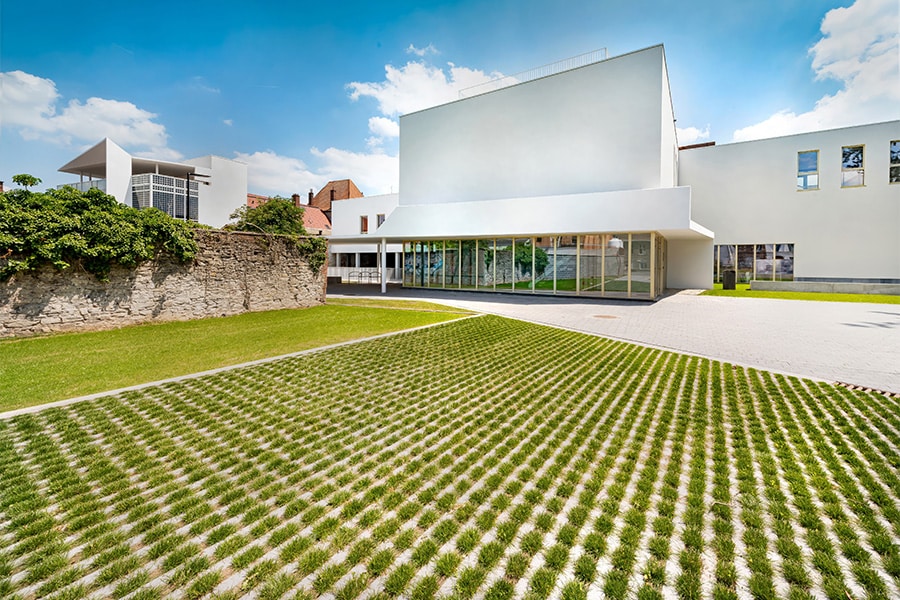
Three major pillars in 3D concrete printing: Sustainability, construction automation and freedom of form
3D concrete printing. A relatively new technique with great potential for the future of construction. "Especially with the climate crisis, the large replacement and renovation task and the labor shortage we are facing," says Pieter Bakker, 3D printing project leader at Saint-Gobain Weber Beamix.
"We are therefore constantly looking for opportunities to become more sustainable and thus have a positive environmental impact on and in our environment." According to Pieter, smarter construction, including through parametric design, is the solution. "We also apply that within our 3D concrete printing technology."

Three major pillars
At Saint-Gobain Weber Beamix, the entire development of 3D concrete printing rests on three major pillars: sustainability, automation of construction (with process optimization as a goal) and freedom of form. "In terms of sustainability, we are looking beyond making concrete more eco-friendly. With 3D concrete printing, we have a technique that allows us to use even less material: less concrete, no reinforcement, no formwork. And because the process is largely automated, we can shorten delivery times and respond to the scarcity of skilled workers. In line with this is process optimization, where time and error reduction play a major role." The third pillar, according to Pieter, is freedom of form. "After all, parametric design is a technical and very important expression of the ease of form freedom, but also the ability to generate 'more exotic' shapes plays an important role."

Parametric designing
"In our 3D concrete printing technology, we use parametric design. This uses algorithms to generate designs based on variables and their interrelationships," Pieter explains. "By adjusting the input values of the variables, new designs can be generated quickly and easily within the existing design." The visual design method generates a 3D model without "programming," which can be loaded back into certain software for further processing. "It is enormously flexible and works very quickly. You can make changes to the design very easily, or adjust dimensions, for example. In addition, parameters for geometric constraints, structural requirements, material properties and the like can also be added. The model then shows what is possible within the set boundary conditions. With a parametric process, complex geometry and structures can be designed, reducing costs, increasing speed and delivering a product with consistent quality," said Pieter. "Our 3D concrete printed talus stairs and bicycle bridges are great examples of this."

Talud stairs
"A talus staircase, perhaps not the sexiest structure, very clearly demonstrates all the advantages of parametric design, immediately bringing out all the benefits of 3D concrete printing," says Pieter. "Based on the relevant dimensions, we can design a talus staircase without drawing or calculation, which can be printed the next day and delivered within three weeks." Process optimization optima forma, according to Pieter. "Because no separate formwork is needed and no reinforcement has to be added, our 3D printed talus stairs are some 60% more durable." The talus staircase is one of the products that Saint-Gobain Weber Beamix is fully marketing within concrete printing. "We are past the pioneering phase, have already realized about 50 stairs in the Netherlands and within the rest of Europe, and have now received approval from ProRail, Rijkswaterstaat and several municipalities. Of course I'm excited about this," says Pieter, whose background as a civil project manager at BAM also really sees a perfect product. "Price-wise, how it looks and also maintenance-wise: I absolutely see the added value of this."

Most sustainable bicycle bridge
A lot more complicated than talus stairs or other fairly standard concrete products such as sewer manholes, are the 3D-printed bicycle bridges rolling out of Weber Beamix's print factory in Eindhoven. "In 2017 we had the world first: together with the TU/Eindhoven, BAM Infra, Witteveen+Bos and several other partners, we made the world's first fully 3D printed construction: a bicycle bridge in Gemert. From there, we went further into the design process with the same parties: what can we do better and what steps can still be made in terms of sustainability. To achieve that, we wanted to take on projects that would allow us to gain even more experience. One of these is the 'Cycle Bridges N243' project. A collaborative project between BAM Infra and the Province of North Holland, who really embraced our innovation. We all said: we are going to realize those bridges together! As a construction team we went through all the phases, from sketch to execution, approaching the project with the same three pillars: how can we do this sustainably, fully automated and with as little material as possible, and of course in the context of freedom of form." This involves four bridges with different arches and dimensions, all realized from the same parametric model. It shows that within certain parameters, a lot really is possible. "It has been a beautiful and by no means always an undulating process, during which we are very grateful for the farther-reaching vision of the Province of North Holland. Not only because they dared to take on this project, but also because they indicated: 'if this becomes the standard of bridge making, it will save a lot of money and time in the preliminary and permit process.' There are now three unique 3D printed bridges at the N243 and the fourth is coming."

Sustainable and digital innovation together
It may be obvious: 3D concrete printing fits a sustainable future. "We have already taken many steps but we are not there yet," says Pieter. "Governments and industry will have to continue to innovate together to overcome the climate crisis. So I invite them to explore and take that step with us."
Heeft u vragen over dit artikel, project of product?
Neem dan rechtstreeks contact op met Saint-Gobain Weber.
 Contact opnemen
Contact opnemen




